In the winter season of cold, snow and holiday music, the North American bird breeding and nesting season seems months away. It’s not until the trees begin to bud and flowers bloom that the birdsong fills the air.
And that’s true. But not for great horned owls.
Winter is the time to enjoy the great horned owl breeding season–a time when these charismatic birds are much easier to see and hear.
It’s the hooting season.
Don a winter cap and head out to your local park or walking trail to enjoy one of the season’s coolest spectacles. Here’s what you need for your next owl outing.
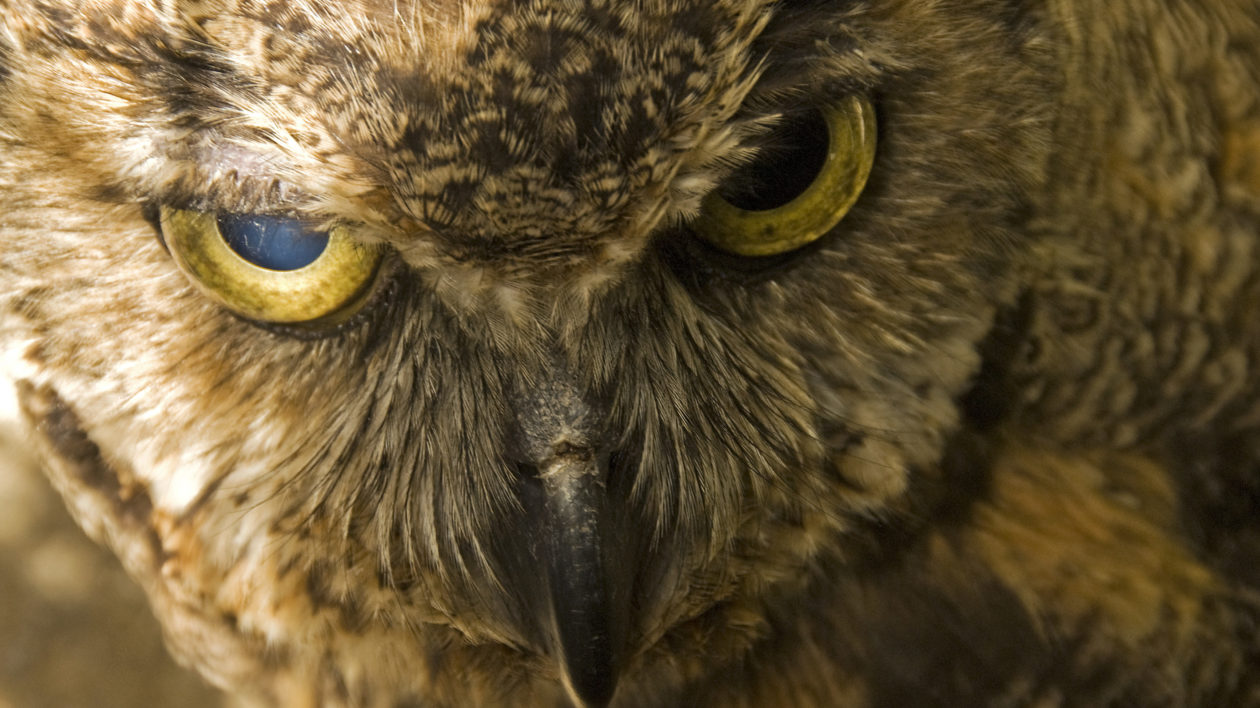
Into Owl Territory
The great horned owl, of course, is one of the most recognizable birds in the Americas, with its pointy feather tufts (the “horns”) and large fluffy appearance.
This is the prototypical “wise old owl,” and the owl of cartoons and children’s books.
It’s also incredibly adaptable, found from Canada to Patagonia, and most places in between. It is at home in desert and wetland, forest and prairie. And it also has no trouble thriving around people: you can find them in parks, farms, small woodlots, suburbs and cities.
Despite this, they’re not always easy to spot due to their nocturnal habits. But at this time of year, in the right location, a chorus of hoots provides the soundtrack to dawn and dusk.
That’s because, around October, male great horned owls begin setting up territories. Most great horned owls mate for life, but in the fall the pair begin a courtship display, loudly calling to each other.
Become a Member
Make a lasting impact for nature when you join The Nature Conservancy
The great horned owl’s hoot is pretty much unmistakable, although ornithology web sites often describe it in different ways. A common hooting pattern is a longer hoooooot, followed by two or three shorter hoots.
And these owls have a range of other vocalizations, too, some of which sound like barks or a screeching cat. (Cornell’s All About Birds site features some great audio of these different calls).
The owls continue setting up their territory this month, and begin setting up a nest.
They’ll use an abandoned nest previously used by a red-tailed hawk, squirrel or other critter. Come January, they’ll begin setting in the nest–far earlier than most other birds.
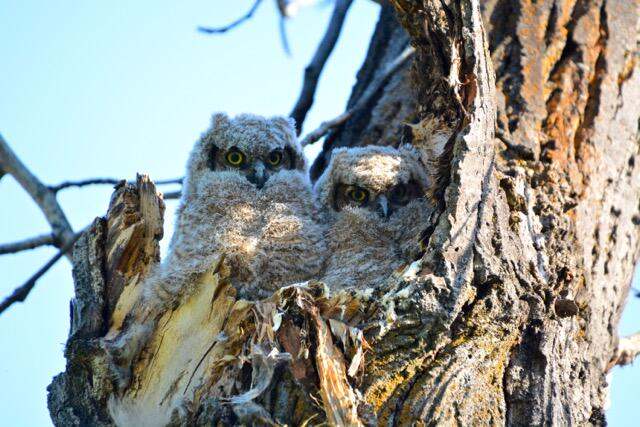
Why Do Owls Nest So Early?
Nesting early naturally entails some risk. Eggs must be kept warm and incubated, which can be a challenge when the temperature is in the single digits and snow is falling.
Female owls stay on the nest for prolonged periods (and when they leave to hunt, the male will take over).
If the eggs become too cold, they won’t hatch. This is why most birds wait until temperatures are warm and mild.
So: why nest early?
Owls are large birds. It takes them longer to grow and mature than, say, a songbird.
Young great horned owls must also master complex hunting maneuvers. They are equipped with superb senses – researchers have found that a great horned owl can hear a mouse rustling at 900 feet – but hunting still involves learning, trial and error.
Early hatching means they’re ready to practice their flying and hunting skills when the weather is mild and prey is abundant.
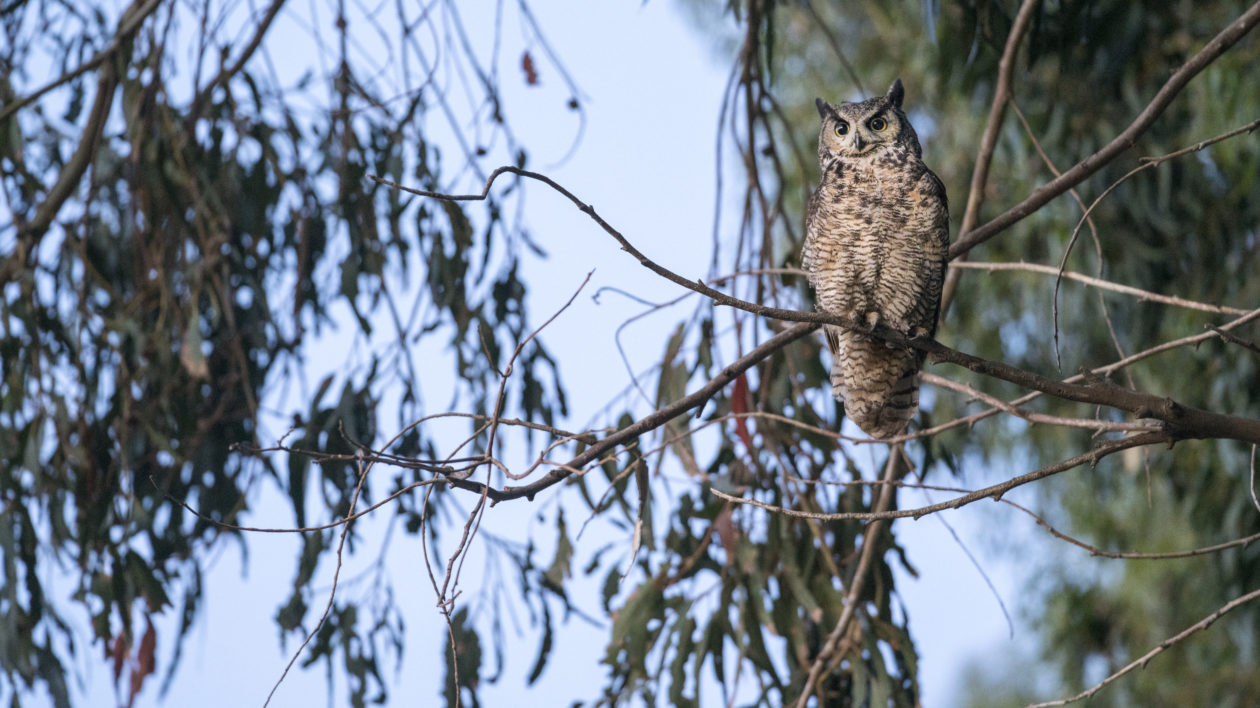
Enjoying the Owl Show
There’s likely a great horned owl territory near you. Now you just need to find it.
While owls can live in a variety of habitats, you won’t find them just anywhere. Focus on the edges. Owls prefer to have a good vantage point – a place where they can see out over the terrain.
Trees that overlook an open area are ideal. In particular, try to find a big-limbed tree that has shed its leaves (or a dead one). You can often find owls roosting there.
You can do a bit of scouting, too. Owls regurgitate the indigestible hair and bones of their prey: called owl pellets. You can often find a number of these pellets below preferred trees. (You can often reassemble the bones of mice by dissecting an owl pellet, another fun wintertime activity).
Of course, the easiest way to spot owls is not by looking, but listening. Those haunting hoots carry a long way. Sometimes you almost feel those hoots before you see them.
Once you hear the hooting, look carefully in likely trees, and you may be able to see the distinctive profile of the owl. Look through a binocular, and don’t be surprised if the owl is staring back at you.
It pays to quietly observe the owls for a while. I’ve been able to watch some interesting behavior, including owls mating.
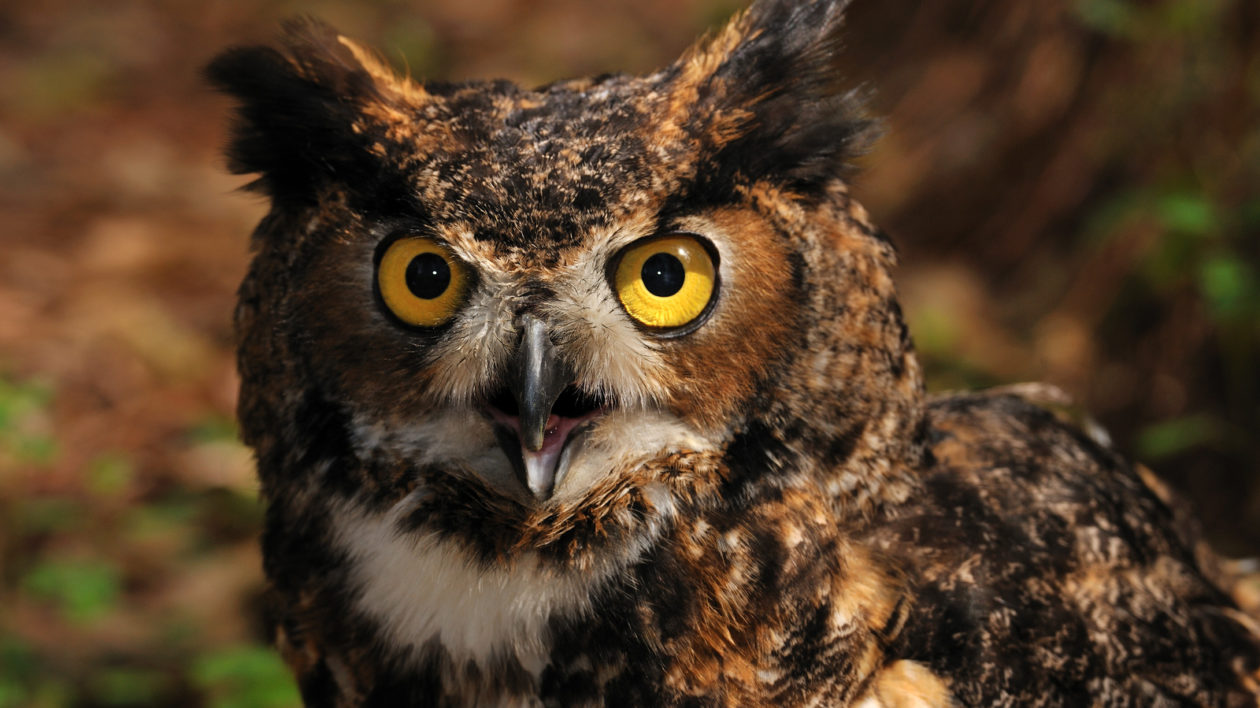
Photo © Mark Conlin, courtesy of Tallahassee Natural History Museum
My Owl Connection
Family lore holds that, long before I could utter words, I would lie in my crib and hoot like an owl. Perhaps my naturalist path was set, even then.
That story has been in my thoughts this year, as I prepare for the birth of my own son. The great horned owls, it seems, are everywhere. I see them perched on trees around our home and along the greenbelt jogging path; hear their calls in the canyons and river bottoms.
I’m always alert to the local wildlife, but this year, I can’t help but pay extra attention to all that owl activity.
I wake up in the middle of the night, thinking of my son and the world he’ll inhabit. And then, there it is: that deep hoot, hoot, hooting.
It seems to fill the room.
I snuggle under the covers and smile, filled with the hope that my son will find such comfort and joy in the wild things and their always-interesting ways.
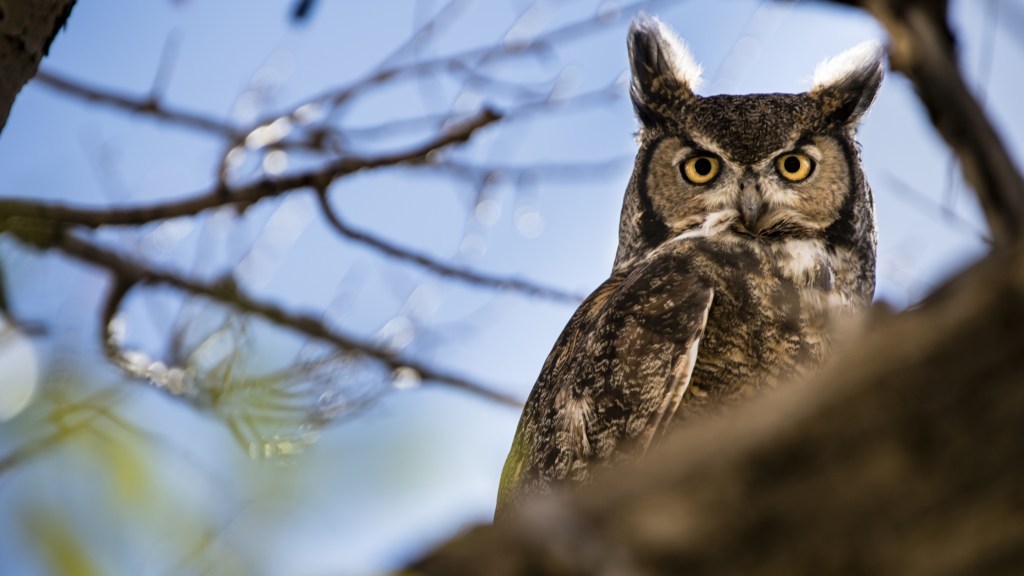



I share your love for the owls too! My mother had them all over our house in the form of knick knacks and pictures. Guess thats where it started. I now live on one acre in an 1850 farmhouse w/summer kitchen and huge norway spruces that line the front of our property. We often can call them in right to the yard. Its early August and we have 2 that visit nightly, and i wonder is it a female and male or a father teaching the son how to hunt? Could you possibly tell me your thoughts? we are in central Pennysylvania. Thank you
Hi Carmen,
Thanks for your comment and question. It is difficult to know for sure. I have been seeing young owls locally, and the adults do seem to hang around. Soon they will move to set up their own territory. I would see if you could get a look to see if they are young. The young look fuzzier and have less developed “ears” than the adults. Have fun!
Best,
Matt
We have watched a family of horned owls in our small wood behind our house here in the desert of Western Arizona. We have watched the small ones grow up. The two we watched even started a
dance when it was time for dinner. The dance consisted of rotating their head three times to
the right, then three times to the left. Then they did three reps of a squat, ending in a slide to the right, and spreading their wings. And the “owly wobble” was born. Amazing.
How long does a male and female pair of great hornedals stay together during the mating season
I just heard 2 GH owls hooting back & forth. I usually only hear them in Dec-Jan.
Is it unusual to hear them in May?
While great-horned owls hoot more frequently in December and January, you can hear them hooting at any time of year. Thanks for your question.
Matt
Thank you, I enjoyed this so much…I heard Hooting and started calling back. My husband kept telling me It was hooting a Morning Dove. We have lots where we live. But they kept hooting back at me…We are so lucky, we had two baby Great Horned Owls born in our tree. When one of the parents came flying out of our tree in the early evening, my husband said, okay you were right, they are Owls. I was fortunate enough to get a friend who does wildlife photography to come and get a couple great pictures the night before they flew the Coop!… I can only hope they may come back near our property next year. I miss them!
I live in Scottsdale Arizona and I have great horn owls who stay in my tree everyday. Usually I only have one, but this last week it is two. One comes in at sunrise and leaves at sunset. Now I have two and it’s April . I believe it’s a pair but there is no nest here. Do you think they have already hatched their eggs? I believe that it’s not always the same owl that is here, would a male and female switch off sitting on nest, and take turns resting during the day in my tree?
Great article! We have been listening to the ? outside our home in Scottsdale AZ for well over a month so far this year. They hoot at dusk and start up again around 3 AM, continuing until sun-up. They sit on our rooftop and look out over the Boulder-littered terrain. They leave many “presents” which require a good deal of scrubbing. We have yet to find their nest or see baby owls this year!
We were fortunate to observe a male and female great horned owls mating on a nearby rooftop just at dusk last evening. We were not sure which were male and female but have since learned the female is larger. This occurred after a couple weeks of hearing the hooting, often all during the night. It sounded like there were two, one hooting being softer than the other. It was quite a thrill to see them. Glad this is a retirement community with no impressionable young persons around.
I loved your article. We have a couple of Great Horned Owls that live in the tree behind us and they are amazing!
Thank you for sharing!
Pat
It’s 7 years later but I only just stumbled onto this, as I have recently discovered a pair of great horneds that seem to be setting up to nest right near my house! This is so beautifully written!
Beautiful written.
As I lay here at 2:OO, in a wooded area outside of Flint, I hear the call of the great horned owl. A crisp, calm night in mid January, with only a dusting of snow, I am feeling that the hunting will be good for my friends. Thanks for all you do in educating us about the wild. Your easy flowing writing style has been a joy to discover. Your new fan,
Bill Polk
Awesome article, thoroughly enjoyed!
It’s amazing to listening them. Middle December they started here and I love listening “ their chat “ they are on the tree near my bedroom. Thank you for your information on them
I’ve had some lovely conversations with owls. I feel such honor when they respond to me